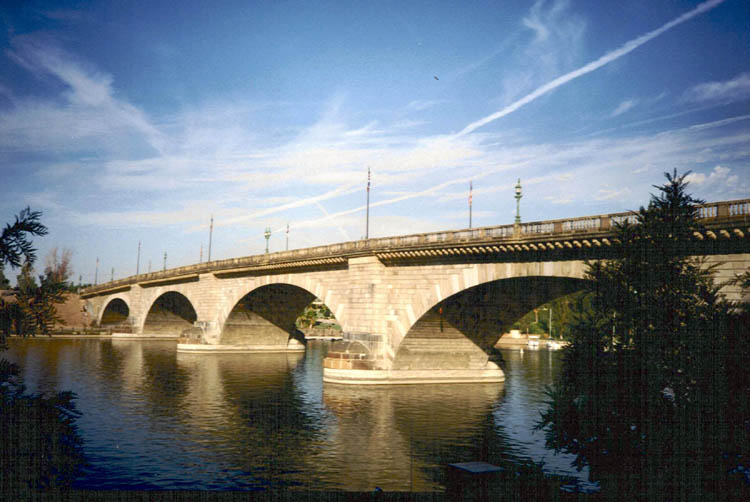 Road, rail and air services offer good connections between London and the rest of the country. The outskirts of London are ringed by an orbital motorway, the M25, from which motorways radiate into London and off across Britain. From grand Victorian termini in the centre of London trains run across the country, linking cities, towns, ports and the continent through the Channel Tunnel.
Road, rail and air services offer good connections between London and the rest of the country. The outskirts of London are ringed by an orbital motorway, the M25, from which motorways radiate into London and off across Britain. From grand Victorian termini in the centre of London trains run across the country, linking cities, towns, ports and the continent through the Channel Tunnel.European Cities Monitor, the recent survey of European business people carried out by Healey & Baker, singled out London's external transport links by road, rail and air. London ranked as the best location out of 30 European cities.
Train passengers to mainland Europe arrive or depart at Victoria or Charing Cross stations for the channel ferry ports, while passengers on the new channel tunnel link travel from the terminus at Waterloo International that opened in 1994.
The underground - or metro - system in London is known locally as the “Tube”. With buses, it is the principal means of public transport around and into the centre of the capital, especially north of the Thames (owing to adverse geological conditions there are few Tube lines south of the river). The Tube's 270 stations carry 735 million passengers a year; Victoria Tube station is busier than all of London's airports put together.
Despite its name, the Tube is only entirely underground in central London; in the suburbs most lines are above ground. Nevertheless, with 171 km of tunnels it is one of the largest underground systems in the world. It was extended in the 1970s with the Jubilee Line (named after HM The Queen's Silver Jubilee in 1977), which is itself extended to Docklands.
London has five airports: Heathrow, Gatwick, Stansted, Luton and London City, together handling over 68.1 million passengers a year. Gatwick handles about 100,000 passengers a day during high season.
London City airport, constructed as part of the redevelopment of Docklands, handles a growing number of European flights. It runs a convenient 10 minute check-in time and is only 20 minutes from the City by road on the recently constructed Limehouse Link. There are good bus connections, and the Jubilee Line underground extension provides the airport with a rapid link to central London.
Public transport in London is also provided by buses, taxis and the Docklands Light Railway.
London's bus network links with the rail and underground services, with large bus stations next to important rail interchanges. Buses provide commuter services, local services and orbital links around the London suburbs. Many main roads have bus-only lanes.
Buses have played an important part in the integrated transport planning in the redevelopment of Docklands. Bus services are co-ordinated wiih the Docklands Light Railway and the Jubilee Line underground extension. For instance, the bus interchange at the DLR's Prince Regent Station provides a three minute connection to London City airport.
No comments:
Post a Comment